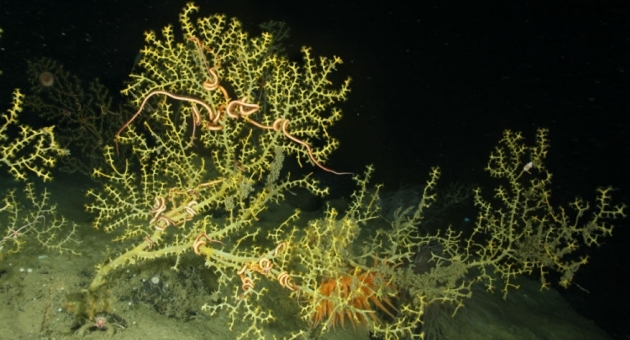Impact of Gulf oil spill broader than predicted

The April 2010 Deepwater Horizon oil spill has had a broader impact on coral communities in the Gulf of Mexico than originally predicted, according to a team of researchers that includes Temple marine biologist Erik Cordes.
The researchers found two coral communities that were 22 kilometers from the stricken oil rig, which is 7 kilometers further away than a damaged community they had located in 2010, making the oil spill’s footprint wider than originally believed. They recently published their findings, “Footprint of Deepwater Horizon blowout impact to deep-water coral communities,” in the online Early Edition of the Proceedings of the National Academy of Sciences.
Following their 2010 discovery, located 15 kilometers from the BP-operated oil rig, Cordes and his fellow researchers analyzed government, industry and BP’s own data to plan out an extended survey of the area around the drilling rig.
“After we found that first community, we knew we needed to continue searching a larger area of the floor of the Gulf of Mexico to make sure there wasn’t another damaged coral community,” said Cordes, associate professor of biology in Temple’s College of Science and Technology.
Cordes lead one of two legs of a research cruise in fall of 2011 looking for additional evidence of the oil spill’s impact. Using a remotely operated vehicle with a high-quality camera, they photographed corals at high probability sites within 20 miles of the Deepwater Horizons rig.
“We have been following the original site since we found it, so what we knew what it looked like in 2011,” said Cordes. “When we found multiple sites site that looked like the original, we knew it was a sign of the spill’s impact. With these new sites being up to 22 kilometers away and deeper than the original, it demonstrates that the impact of the Deepwater Horizon oil spill extends way beyond, and at a deeper depth, than our original 2010 discovery.”
Cordes believes that any impact to deep-sea coral communities beyond the 22 kilometers would be at a lower level and might now be impossible to see now and its consequences even harder to detect.
“A lot of the work in our lab is now focused on developing genetic tools that would allow us to diagnose whether corals have been exposed to lower levels of toxic oil and dispersants so we can better detect and monitor corals for future impacts,” he said.
In addition to Cordes, the team included researchers Penn State University, Woods Hole Oceanographic Institution, Louisiana State University, Bureau of Ocean Energy Management, and TDI-Brooks International Inc.
The research was supported by the Assessment and Restoration Division of the National Oceanic and Atmospheric Administration, the Gulf of Mexico Research Initiative funding to support the Ecosystem Impacts of Oil and Gas Inputs to the Gulf consortium administered by the University of Mississippi, and BP as part of the Deepwater Horizon Oil Spill Natural Resource Damage Assessment.